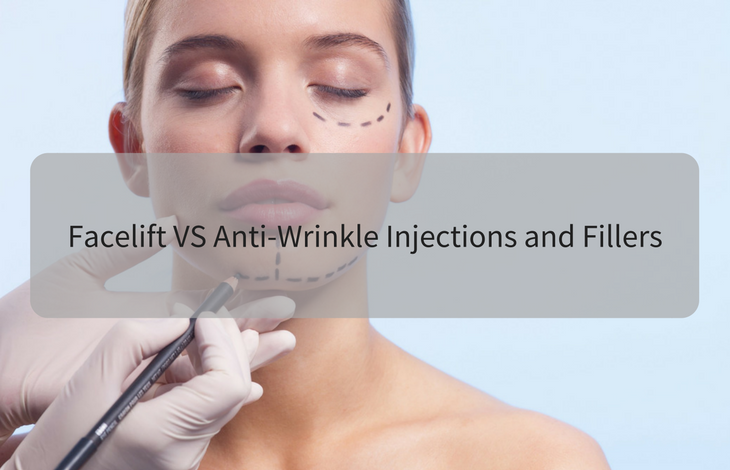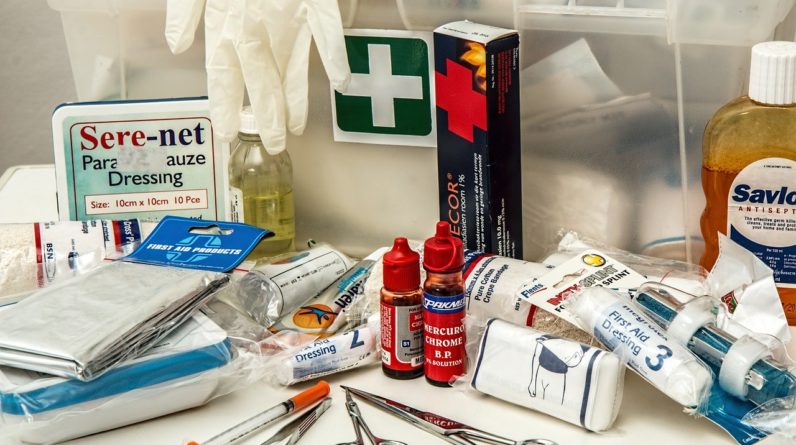
The average person knows there are two options when you want to get rid of wrinkles. You can get a facelift, or you can inject fillers beneath the wrinkles. Facelifts cost up to ten times as much as wrinkle injections, but they also have more long-term results.
A facelift will keep for five years or so if it’s done properly. Injections only last three or four months, while the effects of fillers can be seen for a year or two. It’s important to note the difference between wrinkle injections and fillers before contrasting them with facelift procedures. While the terms are often used interchangeably, they’re quite different.
Injections and fillers are non-surgical, so they are less invasive than facelifts. They don’t need anaesthesia, but they do need to be handled by a professional. If injections are done badly, they can leave scarring from poorly placed needle pricks.
Misplaced injections can also affect symmetry, which will ruin the overall effect. Wrinkle injections and fillers both target unwanted signs of ageing, but they approach the problem in different ways.
The first wrinkles that appear as we age are crows’ feet, laugh lines, and brow lines. They form as a result of regular facial expressions. When we smile or laugh, or eyes crinkle up, and the outer edges of our lips crease. When we’re thinking, frowning, or squinting, it’s our brows that scrunch up.
In our younger years, our skin is supple enough that this creasing leaves no permanent marks. But as time passes, our skin thins and loses elasticity, so the creases remain after our expressions go back into neutral gear. These creases are caused by muscle action.
When you have wrinkle injections, they relax the nerves that cause your muscles to move. This means when you smile, frown, or laugh; your muscle response is minimised so that creases won’t appear. The ones that exist will look less visible, and new ones won’t form.
The substance that is put into your muscles is purified protein. Wrinkle injections can be effective for up to six months before your nerve response resumes in entirety. In some patients, the nerves bounce back sooner, so new injections are required within three months.
With time, your nerves become more affected by the injections so you’ll need less frequent touch-up shots. The results of wrinkle injections aren’t instant. Usually, it takes about a week for your wrinkles to be visibly reduced.
Wrinkle injections are sometimes referred to as muscle relaxants. While they are most common for brow lines, they can also be used to give you a fuller nose or minimise the wrinkling on your neck.
They also work well for eliminating the creases that appear around the lips of many smokers. Muscle relaxants can reduce the wattle effect on the necks of patients, and they can relax the scrunched lines between eyebrows, as well as the worried creases on your forehead.
Fillers contain hyaluronic acid. This substance is injected directed into the wrinkled skin. It fills out the skin, reducing the wrinkles and giving a fuller, more elastic appearance. Fillers respond instantly, so the result is immediate. Doctors can only fill a little at a time, so the patient receives multiple fillers over a period of 4 to 14 months.
Because fillers plump your skin, they can also be used to define your cheek bones or fill out hollowed eyes. Some fillers are temporary so that they will get absorbed into the skin over time, but others are non-bio degradable, so their results are more permanent.
The main difference between wrinkle injections, fillers, and facelifts are related to cost and longevity. Facelifts and fillers show results immediately, while muscle relaxants take five to seven days.
Facelifts require scalpels, while wrinkle injections and fillers do not. The effects of muscle relaxants can last three to six months. Fillers last a year or two, while facelifts can last five or six years. If you’re unclear about which procedure is best for you, talk to your surgeon. They’ll be happy to advise you.





